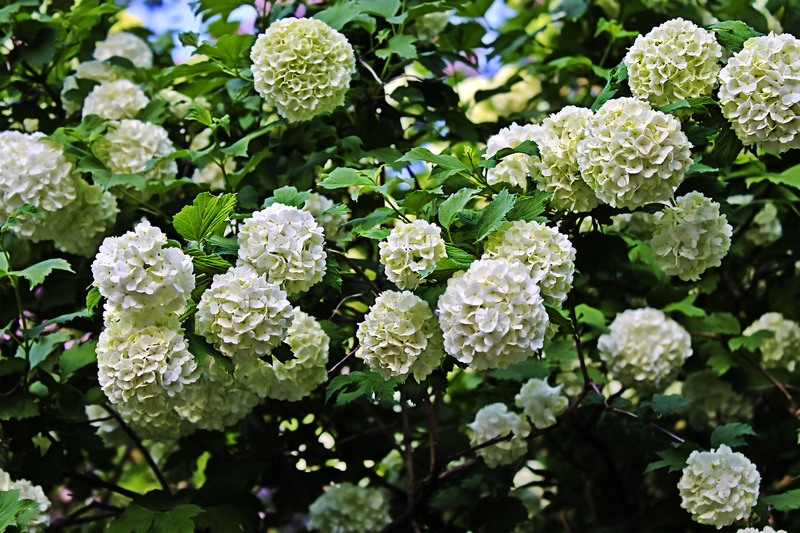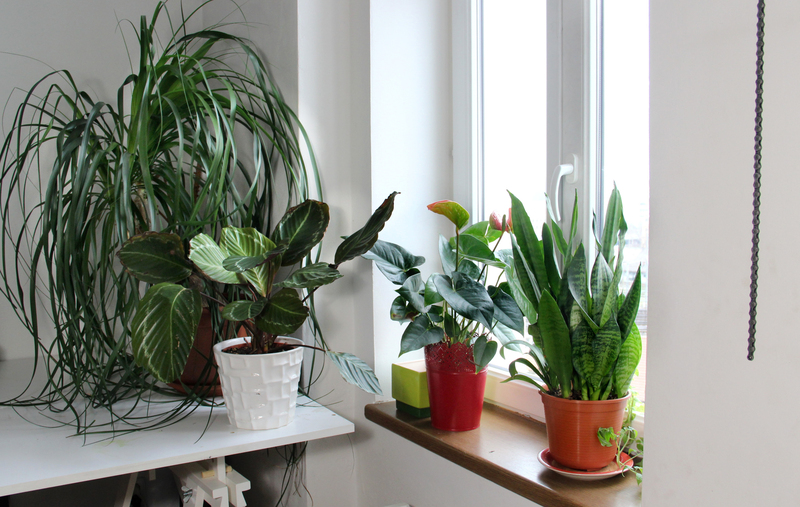Cultivate Change: Gardening as a Climate Strategy
Posted on 28/06/2025
Cultivate Change: Gardening as a Climate Strategy
In a world facing mounting climate challenges, one of the most accessible and impactful strategies for creating positive change starts right at home: gardening. With thoughtful cultivation, gardens can act as powerful tools for carbon sequestration, biodiversity, and eco-friendly living. This article explores in depth why and how gardening serves as a climate solution, and how individuals and communities can harness its full potential.
Understanding the Role of Gardening in Climate Action
The climate crisis is affecting ecosystems, food production, and weather patterns worldwide. While industrial solutions and policy interventions are crucial, local actions like sustainable gardening can collectively drive significant environmental benefits. By planting, landscaping, and maintaining green spaces, individuals can cultivate change with tangible impacts.
How Home Gardens Help the Climate
- Carbon Sequestration: Plants absorb atmospheric carbon dioxide (CO2) during photosynthesis, storing carbon in their roots, stems, and leaves.
- Cooling the Urban Heat Island: Gardens, green roofs, and shaded yards lower local temperatures and combat urban heat islands.
- Biodiversity Support: Gardens offer habitats for pollinators, insects, and birds, fostering ecosystem resilience.
- Water Management: Permeable soil in gardens reduces runoff, aiding groundwater recharge and minimizing flooding.
- Local Food Production: Growing food at home trims supply chain emissions and promotes sustainable eating habits.

The Science Behind Gardening as a Climate Solution
To appreciate how gardens combat climate change, it's essential to understand some key ecological mechanisms. Carbon sequestration is at the heart of the gardening-climate connection. Through the process of photosynthesis, plants take up CO2, reducing greenhouse gases in the atmosphere. This carbon stays locked within roots, organic matter, and soil for years, or even centuries.
Soil Health and Climate Resilience
Healthy soil acts as a carbon sink. Organic-rich soil can store more carbon than degraded or bare soils, which tend to emit CO2. By using techniques such as composting, mulching, and reduced tillage, home gardeners can significantly boost soil health and sequestration capacity.
- Composting: Converts waste into nutrient-rich humus, feeding plants and microbes that store carbon.
- No-till gardening: Reduces soil disturbance, keeping carbon in the ground.
- Cover crops and green manures: Planting legumes, clover, and other cover crops keeps soil covered and fertile, increasing organic matter content.
Climate-Resilient Gardening Practices
True climate gardening involves more than just planting; it's about adopting practices that maximize ecological benefit while minimizing harm. Climate-resilient gardening focuses on sustainable, environmentally conscious methods that support long-term ecosystem health.
Key Sustainable Gardening Techniques
- Native Planting: Prioritize native and drought-tolerant species adapted to your local conditions, thus reducing water and chemical use.
- Pollinator Habitats: Plant flowers, herbs, and shrubs that attract bees, butterflies, and beneficial insects, supporting biodiversity and food crops.
- Companion Planting: Grow plant combinations that naturally deter pests and enhance growth, reducing the need for pesticides.
- Rainwater Harvesting: Collect and reuse rainwater for irrigation to conserve resources and prevent runoff.
- Organic Mulching: Suppress weeds, retain moisture, and build soil carbon using straw, wood chips, or leaves.
When gardeners adopt these strategies, they create resilient landscapes that thrive in changing climates while actively cooling their surroundings and storing more carbon.
Edible Gardens: Local Food as a Climate Solution
One often overlooked way that gardening fights climate change is by supporting local food production. The global food system is responsible for a significant portion of greenhouse gas emissions, largely due to transportation, packaging, and processing. By growing fruits, vegetables, and herbs at home or in community gardens, individuals can slash their food miles and eat healthier, more sustainably.
- Less Packaging: Harvesting food from your garden eliminates single-use plastics and packaging waste.
- Reduced Food Waste: Home gardeners pick only what they need, minimizing spoilage and landfill contributions.
- Organic Practices: Gardeners can avoid synthetic pesticides and fertilizers that contribute to nitrous oxide (a potent greenhouse gas).
- Seasonal Eating: Growing seasonal crops aligns diets with natural cycles, reducing demand for energy-intensive growing methods.
Community Gardens and Urban Agriculture
Urban gardening and community plots are on the rise worldwide--transforming vacant lots, rooftops, and schoolyards into productive green spaces. These shared gardens:
- Promote social cohesion and environmental education, deepening the community connection to climate action.
- Increase green cover in cities, mitigating the effects of air pollution and heat islands.
- Strengthen food security, especially in areas with limited access to fresh produce.
Gardening for Biodiversity and Ecosystem Services
Biodiversity is a cornerstone of climate adaptation. Gardens that incorporate a variety of species behave as miniature ecosystems, providing critical services such as pest control, pollination, and seed dispersal. By cultivating diversity in your planting choices, you make your garden--and your broader environment--more resilient to extreme weather or pest outbreaks.
- Wildlife Corridors: Urban and suburban gardens link fragmented habitats, supporting land-based wildlife.
- Water Filtration: Native plants and healthy soils filter pollutants, improving local water quality.
- Microclimate Creation: Planting trees and hedgerows shields structures from wind and sun, reducing energy costs and emissions.
Climate-Smart Design: Planning Your Eco-Friendly Garden
Designing a garden with climate goals in mind takes thoughtful planning. Climate-smart gardening involves selecting plants suited to your region, grouping them for efficiency, and using techniques that conserve resources.
Steps for Creating a Climate-Conscious Garden
- Assess Your Space: Map sun, shade, water flow, and wind patterns to determine planting zones.
- Select Native & Adapted Plants: Choose plants that require minimal watering and maintenance.
- Implement Layers: Include ground covers, shrubs, and trees to maximize carbon storage and habitat value.
- Maximize Perennials: Perennial plants live multiple years, offering long-term carbon uptake and less disruption.
- Add Waterwise Features: Install rain gardens, bioswales, or permeable paths to manage rainfall naturally.
Incorporating these design principles will make your garden a truly effective climate strategy, while saving on water and energy bills.
The Garden as a Hub for Climate Education and Community
Gardens do more than improve individual homes--they can spark broader change. Gardens are powerful teaching tools, offering a hands-on way to demonstrate climate science and solutions to neighbors, families, and classrooms. By inviting others into your garden or starting community projects, you multiply your impact and help normalize climate-friendly behaviors.
- Workshops and Tours: Share sustainable methods and climate lessons with community members.
- Youth Education: Involve children in garden tasks to build lifelong climate awareness and stewardship.
- Seed Swaps and Plant Sales: Exchange resilient varieties and tips for sustainable growing.
From Small Steps to Collective Impact
When many people take small but meaningful climate actions in their gardens, the cumulative effect is profound. It might seem insignificant to grow a few vegetables or plant a tree--but multiplied across millions of gardeners, these choices can help shift global climate trends.
Innovations Accelerating Climate Gardening
Advances in science and technology are making climate-resilient gardening even more effective. From smart irrigation systems to online platforms connecting gardeners, innovation is helping people overcome challenges and adapt to changing conditions.
- Smart Watering Sensors: Use technology to optimize irrigation, saving water and energy.
- Plant Selection Apps: Find regionally appropriate native species or identify candidates for assisted migration.
- Composting Solutions: New composters and biochar techniques speed up soil regeneration.
- Online Communities: Knowledge sharing accelerates the learning curve, allowing novice gardeners to adopt climate gardening techniques rapidly.
Overcoming Barriers: Challenges in Cultivating Change through Gardening
Despite the clear benefits of gardening as a climate strategy, there are obstacles to widespread adoption. Lack of space, time, experience, or initial resources can deter would-be gardeners.
- Space Limitations: Solutions include container gardening, vertical gardens, and utilizing balconies or rooftops.
- Experienced Guidance: Community gardens, local master gardener programs, and online forums can provide support and training.
- Time Constraints: Low-maintenance techniques like mulched beds and automated irrigation reduce labor needs.
- Soil or Water Quality Issues: Raised beds, composting, and rainwater collection help overcome poor local conditions.
By sharing resources, connecting with neighbors, and leveraging technology, more people can join the movement and cultivate climate change through gardening.
Success Stories: Cultivating Change Around the World
Many regions have embraced gardening as a climate solution with impressive results. Examples from cities and communities worldwide show just how transformative gardens can be.
- Detroit, USA: Vacant lots have been converted into productive urban farms, providing fresh food, absorbing carbon, and revitalizing neighborhoods.
- Nairobi, Kenya: Community gardens empower residents to grow food, improve nutrition, and manage rainfall in dense informal settlements.
- Sydney, Australia: School gardens teach climate literacy and sustainable agriculture to youth, making climate action part of daily life.
These case studies illustrate that gardening as a climate action is adaptable and impactful, from individual homes to entire cities.

Getting Started: Your Climate-Positive Gardening Journey
Ready to make a meaningful difference? Here's how you can begin cultivating change through gardening:
- Research native species and sustainable practices in your area.
- Start small with a container herb garden or a single raised bed.
- Connect with local gardening clubs or community gardens.
- Share your experiences and harvests with others to inspire change.
Resources for Further Learning
- Extension Offices & Master Gardener Programs: Offer free classes and advice on sustainable gardening.
- Online Platforms: Forums like GardenWeb and apps such as PlantNet encourage networking and knowledge sharing.
- Local Nonprofits: Many organizations support urban gardening and conservation efforts.
Conclusion: Gardening - Grow Roots, Grow Change
In the fight against climate change, every action counts. By turning soil, planting seeds, and nurturing life in our gardens, we become active participants in building a healthier, more resilient planet. Whether you have a balcony, a backyard, or a windowsill, your efforts can cultivate literal and metaphorical change. Embrace gardening not only as a personal hobby but as a powerful climate strategy that begins right at your doorstep.
Cultivate change through your garden. Step outside, dig in, and be the climate solution our world needs today.



